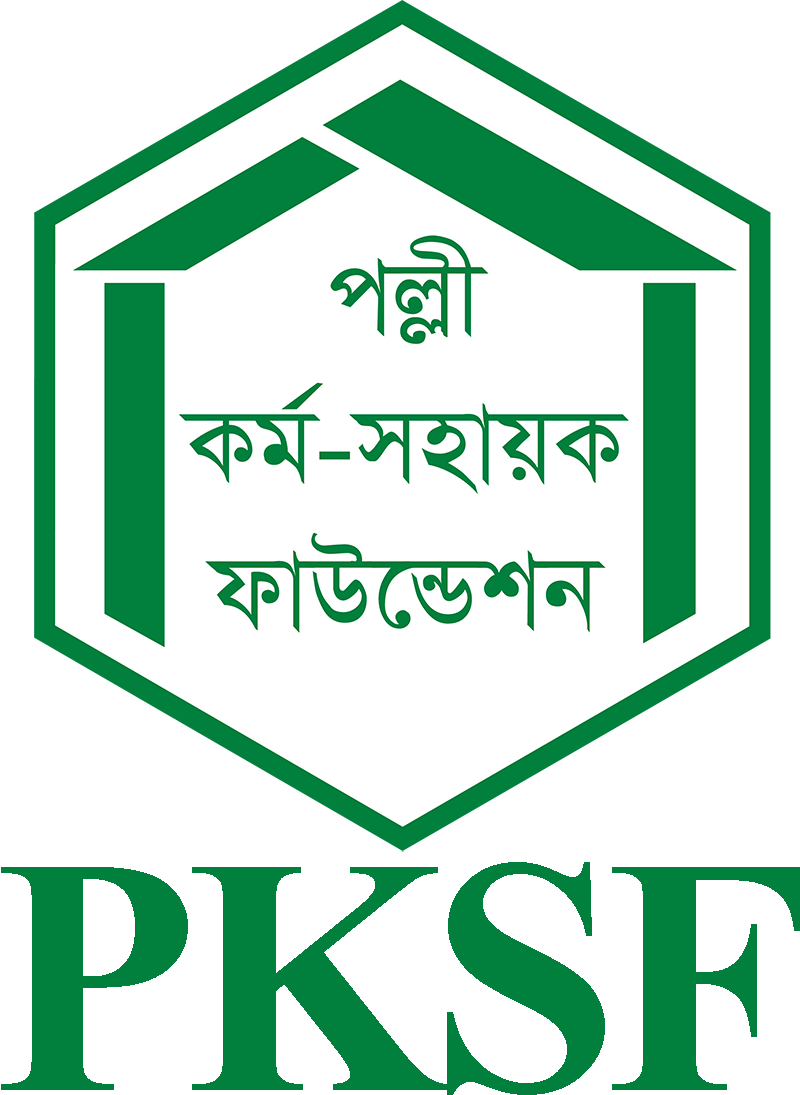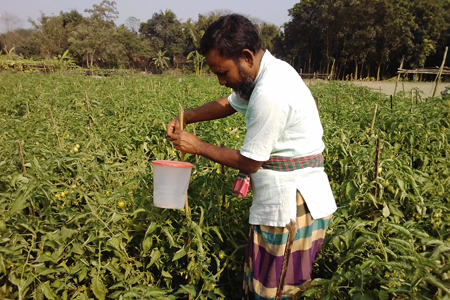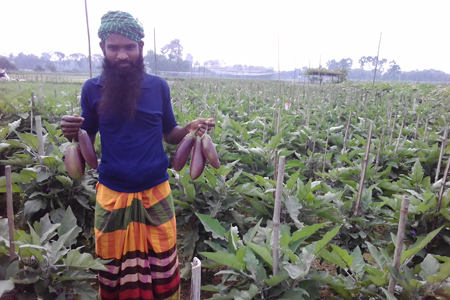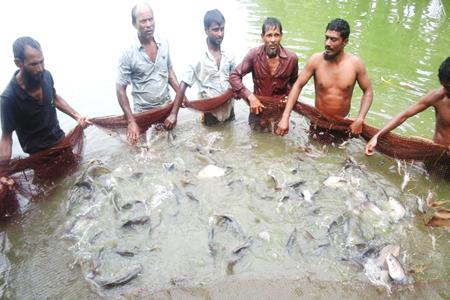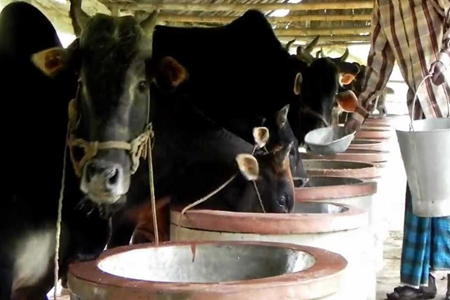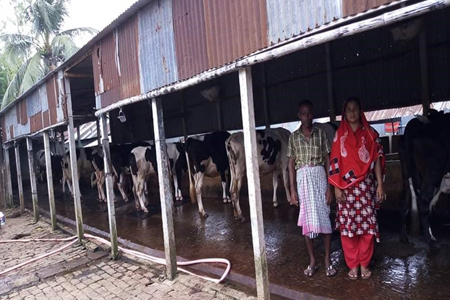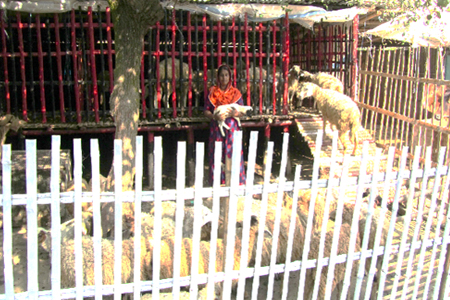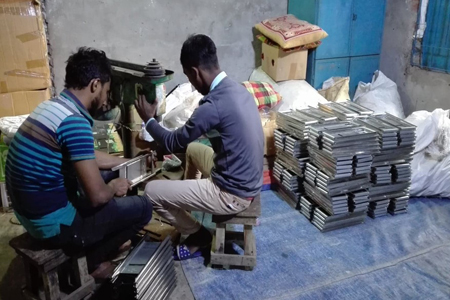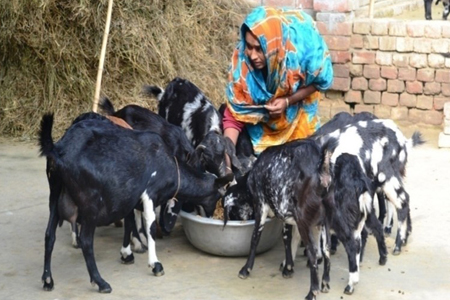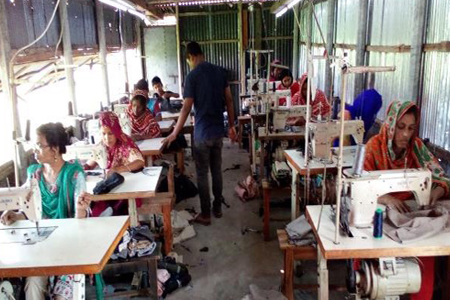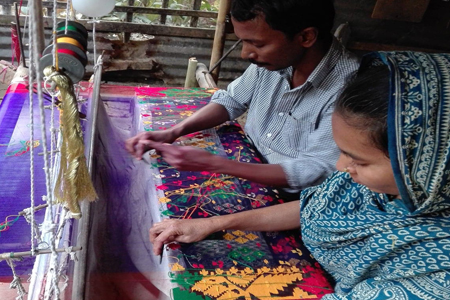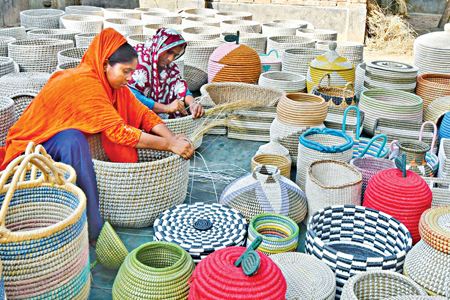Microenterprise Development Project (MDP)
Microenterprise Development Project (MDP) was implemented by PKSF with the aim of supporting inclusive microenterprise development and reducing rural poverty. The project was financed by the Asian Development Bank (ADB) and was implemented across the country through 102 Partner Organizations (POs) of PKSF. The project became effective on 04 April 2019 and continued until 30 June 2023, adapting to the requirements of the aftermaths of the COVID-19 pandemic.
Project Components and Budget
The project had two components: a) loan component of USD 100.0 million (BDT 8.37 billion) which included USD 50.0 million additional financing as a Covid-response measure and b) technical assistance (TA) grant of USD 1.0 million provided in terms of service.
Project Objectives, Outputs and Targets
The objectives of MDP were (i) to promote microenterprise development for inclusive economic development and reducing rural poverty and (ii) to mitigate the negative impacts of the COVID-19 pandemic by injecting liquidity in the rural economy. To achieve these objectives, the project intended to fulfill three main outputs: (i) Expanding funding to microfinance institutions for microenterprise loan expansion, (ii) Enhancing microfinance institutions’ capacity in microenterprise lending, (iii) Extending microfinance institutions’ support for microenterprise development.
The project successfully achieved the targets of each of the three outputs. As of June 2023, the total microenterprise loan outstanding of PKSF at the PO level has increased to BDT 41.20 billion, of which BDT 5.97 billion is for the pandemic-affected microenterprises. The total microenterprise loan portfolio outstanding of PKSF’s POs has increased to BDT 289.64 billion of which 84% is availed by female borrowers. BDT 26.68 billion has been disbursed as loan to 1,59,599 microentrepreneurs through the POs. Of them, 91,008 are pandemic-affected and 80% are female.
Under the TA component, MDP focused on enhancing POs’ capacity in microenterprise lending and microenterprise development support along with implementing gender action plan, inclusion strategy, business cluster development support and environmental and social safeguard measures. The project also held multiple training and workshops to build capacity of the PO staff in implementing gender sensitive, environmentally safe and business cluster-based microenterprise development programs. The project also took initiatives to mainstream Mobile Financial Services (MFS) in microfinance operations. A total of 21,291 ME borrowers were trained on enrollment and using MFS, and 1,78,728 ME borrowers enrolled in MFS.
Lessons Learnt
The Project Completion Report (PCR) for MDP, which was prepared by an independent consultant, found that the project has significantly increased microenterprise loan coverage, meeting the demand for lower-interest loans for working capital during the COVID-19 pandemic. Also, the cluster-based financing under Microenterprise Development Project-Additional Financing (MDP-AF) was an effective approach in facilitating growth of newer clusters due to reduced interest rate of 18%. This also subsequently led to the growth in actors in the backward and the forward linkage activities in the value chain and in the support services provision. In matured clusters, there is scope to work on market expansion activities that allow microenterprises to diversify their market opportunities. This would require investment in developing common facilitation centers, building associations or producer groups, and common platforms for trade.
From the debt-equity mix of the microenterprises, it was found that the microenterprises take loans primarily to use as a cyclical investment for labour and raw materials or for purchasing small-scale capital equipment. This means that the risk to expanding microenterprise loans is still low for the POs.
It was also deduced that microenterprises respond positively to technical assistance on production if they are directly linked with a premium or an untapped market or if they reduce production costs, microenterprises might be more interested in adopting environmental and social safeguards when there is a direct commercial incentive (e.g. access to premium market). There is also scope for using it as an incentive for MEs to access lower interest loans under green financing scheme.
Finally, the findings suggest the need for the POs to collectively negotiate with the MFS providers to reduce the cost of MFS transactions to promote digitally viable microfinance operations. As per the Microcredit Regulatory Authority (MRA), the cost of MFS transactions, currently at 1.2%,which is currently at 1.2% has to be borne by the POs.
According to the Microcredit Regulatory Authority (MRA), the cost of MFS transactions, must be borne by the POs.
Recommendations
It was recommended that lower interest rates for the microenterprises with conditions for ensuring environmental and social safeguards should be introduced to promote inclusive green growth. This will inspire the ‘Push’ strategy. Also, microenterprises should have incentives in terms of access to premium market with higher price for their environment-friendly production practices. This will inspire the ‘Pull’ strategy.
It was suggested that capacity development initiatives for microenterprises should be undertaken focusing on proper financial record keeping, financial management and business plan preparation. Adoption of the latest technologies and MFS will help microenterprises to maintain financial records and receive appropriate financing to get the benefits of economies of scale.
It was also recommended that POs should be encouraged to offer technical and technological assistance to microenterprises as their core strategic tool in order to facilitate sustainable growth in microenterprise lending. Including MFS-based lending and TA service provision capacity of POs in their performance measurements will aid in this process.
Adopting cluster-based lending for all microenterprise loans, specially to facilitate growth of nascent clusters and economies of scale in service provision in matured clusters was also recommended. Initiating a specialized microenterprise development program that promotes climate-resilient technologies and practices to address the vulnerability of the microenterprises to climate change was also a major suggestion. Finally, it was recommended to explore opportunities to provide microenterprise loans to business development services and for common facilitation centers in order to adopt a more holistic ecosystem approach.
PCR Summary
Related Thematic Area:
